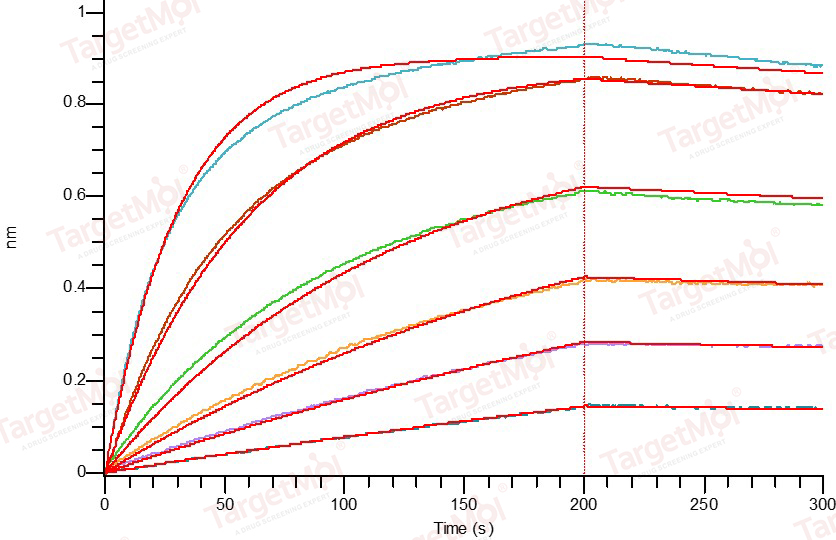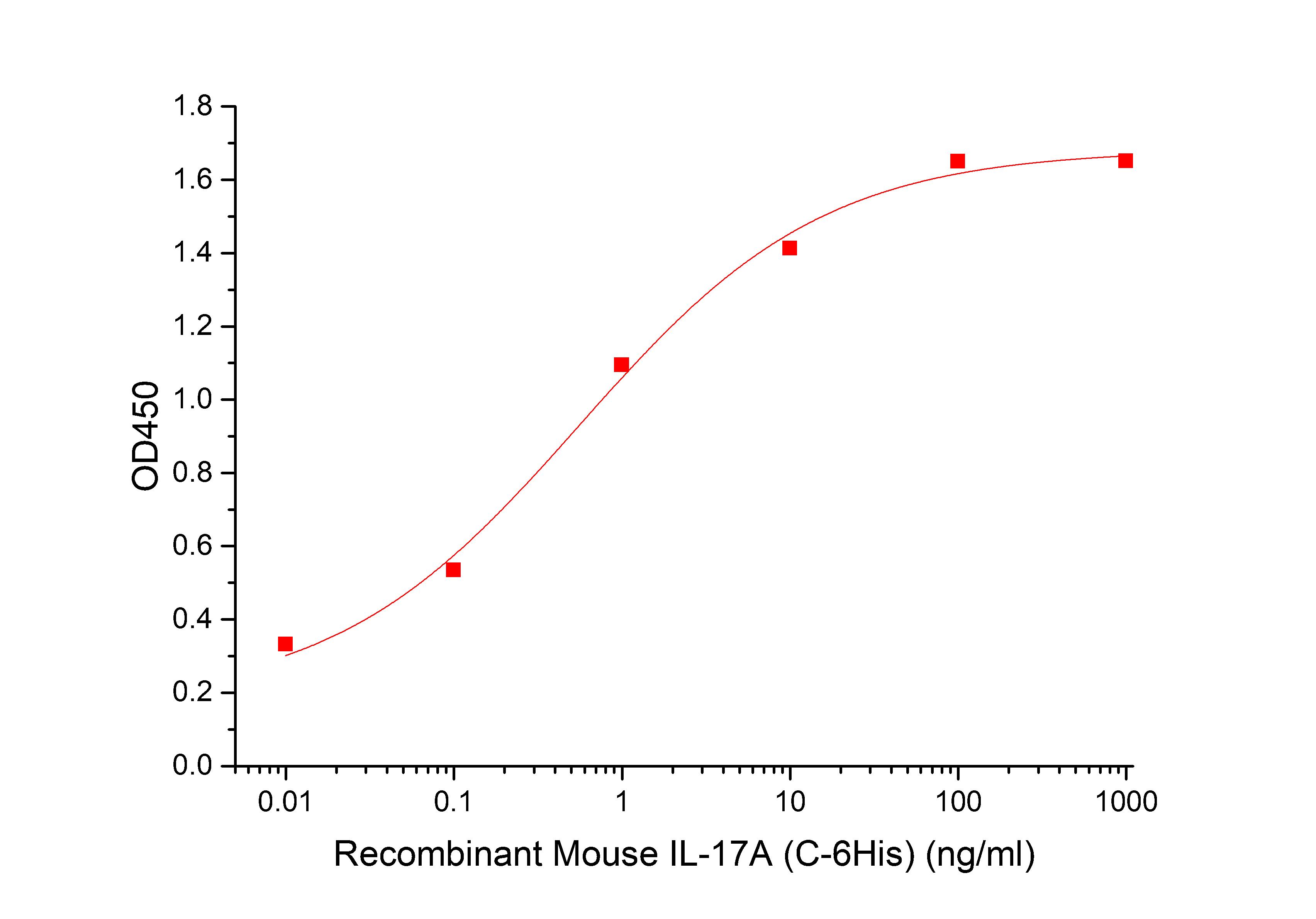- Remove All
 Your shopping cart is currently empty
Your shopping cart is currently empty
IL-17 Protein, Mouse, Recombinant (His)
Interleukin-17 is a potent pro-inflammatory cytokine produced by activated memory T cells. There are at least six members of the IL-17 family in humans and in mice. Mature mouse IL-17A shares 61% and 89% amino acid sequence identity with human and rat IL-17A, respectively. As IL-17 shares properties with IL-1 and TNF-alpha, it may induce joint inflammation and bone and cartilage destruction. This cytokine is found in synovial fluids of patients with rheumatoid arthritis, and produced by rheumatoid arthritis synovium. It increases IL-6 production, induces collagen degradation and decreases collagen synthesis by synovium and cartilage and proteoglycan synthesis in cartilage. IL-17 is also able to increase bone destruction and reduce its formation. Blocking of interleukin-17 with specific inhibitors provides a protective inhibition of cartilage and bone degradation.

IL-17 Protein, Mouse, Recombinant (His)
| Pack Size | Price | Availability | Quantity |
|---|---|---|---|
| 10 μg | $83 | In Stock | |
| 50 μg | $250 | 7-10 days | |
| 500 μg | $1,220 | 7-10 days | |
| 1 mg | $2,730 | 7-10 days |
Product Information
| Biological Activity | 1. Loaded Biotinylated Human IL-17RA -His-Avi on SA Biosensor, can bind Mouse IL-17A-His with an affinity constant of 12.6 nM as determined in BLI assay. (Regularly tested)
2. Measured by its ability to induce IL-6 secretion by NIH‑3T3 mouse embryonic fibroblast cells. The ED50 for this effect is 0.25-1.25 ng/ml. (QC verified)   |
| Description | Interleukin-17 is a potent pro-inflammatory cytokine produced by activated memory T cells. There are at least six members of the IL-17 family in humans and in mice. Mature mouse IL-17A shares 61% and 89% amino acid sequence identity with human and rat IL-17A, respectively. As IL-17 shares properties with IL-1 and TNF-alpha, it may induce joint inflammation and bone and cartilage destruction. This cytokine is found in synovial fluids of patients with rheumatoid arthritis, and produced by rheumatoid arthritis synovium. It increases IL-6 production, induces collagen degradation and decreases collagen synthesis by synovium and cartilage and proteoglycan synthesis in cartilage. IL-17 is also able to increase bone destruction and reduce its formation. Blocking of interleukin-17 with specific inhibitors provides a protective inhibition of cartilage and bone degradation. |
| Species | Mouse |
| Expression System | HEK293 Cells |
| Tag | C-6xHis |
| Accession Number | Q62386 |
| Synonyms | Interleukin-17A,IL-17A,IL17A,IL-17,IL17,Cytotoxic T-Lymphocyte-Associated Antigen 8,CTLA-8,CTLA8 |
| Amino Acid | Thr22-Ala158 |
| Construction | Thr22-Ala158 |
| Protein Purity | Greater than 95% as determined by reducing SDS-PAGE. (QC verified)  |
| Molecular Weight | 17-26 KDa (reducing condition) |
| Endotoxin | < 0.001 ng/µg (0.01 EU/µg) as determined by LAL test. |
| Formulation | Lyophilized from a solution filtered through a 0.22 μm filter, containing PBS, pH 7.4. |
| Reconstitution | Reconstitute the lyophilized protein in distilled water. The product concentration should not be less than 100 μg/ml. Before opening, centrifuge the tube to collect powder at the bottom. After adding the reconstitution buffer, avoid vortexing or pipetting for mixing. |
| Stability & Storage | Lyophilized powders can be stably stored for over 12 months, while liquid products can be stored for 6-12 months at -80°C. For reconstituted protein solutions, the solution can be stored at -20°C to -80°C for at least 3 months. Please avoid multiple freeze-thaw cycles and store products in aliquots. |
| Shipping | In general, Lyophilized powders are shipping with blue ice. Solutions are shipping with dry ice. |
| Research Background | Interleukin-17 is a potent pro-inflammatory cytokine produced by activated memory T cells. There are at least six members of the IL-17 family in humans and in mice. Mature mouse IL-17A shares 61% and 89% amino acid sequence identity with human and rat IL-17A, respectively. As IL-17 shares properties with IL-1 and TNF-alpha, it may induce joint inflammation and bone and cartilage destruction. This cytokine is found in synovial fluids of patients with rheumatoid arthritis, and produced by rheumatoid arthritis synovium. It increases IL-6 production, induces collagen degradation and decreases collagen synthesis by synovium and cartilage and proteoglycan synthesis in cartilage. IL-17 is also able to increase bone destruction and reduce its formation. Blocking of interleukin-17 with specific inhibitors provides a protective inhibition of cartilage and bone degradation. |
Dose Conversion
Calculator
Tech Support

Copyright © 2015-2025 TargetMol Chemicals Inc. All Rights Reserved.


